See the html5canvas website http://www.html5canvastutorials.com there you find the 'toolkit' i.e. texts, transformations,...
The base of textart is a flat text. If you want this flat text to go in a wavy line you have to use transformations to manipulate the text, i.e. by applicating a Bezier-Curve on the flat text ...
see this jsfiddle http://jsfiddle.net/Makallus/hyyvpp8g/ and this thread How Can I draw a Text Along arc path with HTML 5 Canvas?
html
<table><TR><TH>Bezier Curve</TH><TD>
<input size="80" type="text" id="curve" name="curve" value="99.2,177.2,130.02,60.0,300.5,276.2,300.7,176.2">
</TD></TR>
<TR><TH>Text</TH><TD><input size="80" type="text" id="text" name="text" value="testing 1234567890"></TD></TR>
<TR><TD colspan=2><div id="canvasDiv"></div></TD></TR>
</table>
javascript
var first = true;
startIt();
function startIt()
{
canvasDiv = document.getElementById('canvasDiv');
canvasDiv.innerHTML = '<canvas id="layer0" width="300" height="300"></canvas>'; //for IE
canvas = document.getElementById('layer0');
ctx = canvas.getContext('2d');
ctx.fillStyle = "black";
ctx.font = "18px arial black";
curve = document.getElementById('curve');
curveText = document.getElementById('text');
$(curve).keyup(function(e) {changeCurve();});
$(curveText).keyup(function(e) {changeCurve();});
if (first)
{
changeCurve();
first = false;
}
}
function changeCurve()
{
points = curve.value.split(',');
if (points.length == 8)
drawStack();
}
function drawStack()
{
Ribbon = {maxChar: 50, startX: points[0], startY: points[1],
control1X: points[2], control1Y: points[3],
control2X: points[4], control2Y: points[5],
endX: points[6], endY: points[7]};
ctx.clearRect(0, 0, canvas.width, canvas.height);
ctx.save();
ctx.beginPath();
ctx.moveTo(Ribbon.startX,Ribbon.startY);
ctx.bezierCurveTo(Ribbon.control1X,Ribbon.control1Y,
Ribbon.control2X,Ribbon.control2Y,
Ribbon.endX,Ribbon.endY);
ctx.stroke();
ctx.restore();
FillRibbon(curveText.value,Ribbon);
}
function FillRibbon(text,Ribbon)
{
var textCurve = [];
var ribbon = text.substring(0,Ribbon.maxChar);
var curveSample = 1000;
xDist = 0;
var i = 0;
for (i = 0; i < curveSample; i++)
{
a = new bezier2(i/curveSample,Ribbon.startX,Ribbon.startY,Ribbon.control1X,Ribbon.control1Y,Ribbon.control2X,Ribbon.control2Y,Ribbon.endX,Ribbon.endY);
b = new bezier2((i+1)/curveSample,Ribbon.startX,Ribbon.startY,Ribbon.control1X,Ribbon.control1Y,Ribbon.control2X,Ribbon.control2Y,Ribbon.endX,Ribbon.endY);
c = new bezier(a,b);
textCurve.push({bezier: a, curve: c.curve});
}
letterPadding = ctx.measureText(" ").width / 4;
w = ribbon.length;
ww = Math.round(ctx.measureText(ribbon).width);
totalPadding = (w-1) * letterPadding;
totalLength = ww + totalPadding;
p = 0;
cDist = textCurve[curveSample-1].curve.cDist;
z = (cDist / 2) - (totalLength / 2);
for (i=0;i<curveSample;i++)
{
if (textCurve[i].curve.cDist >= z)
{
p = i;
break;
}
}
for (i = 0; i < w ; i++)
{
ctx.save();
ctx.translate(textCurve[p].bezier.point.x,textCurve[p].bezier.point.y);
ctx.rotate(textCurve[p].curve.rad);
ctx.fillText(ribbon[i],0,0);
ctx.restore();
x1 = ctx.measureText(ribbon[i]).width + letterPadding ;
x2 = 0;
for (j=p;j<curveSample;j++)
{
x2 = x2 + textCurve[j].curve.dist;
if (x2 >= x1)
{
p = j;
break;
}
}
}
} //end FillRibon
function bezier(b1, b2)
{
//Final stage which takes p, p+1 and calculates the rotation, distance on the path and accumulates the total distance
this.rad = Math.atan(b1.point.mY/b1.point.mX);
this.b2 = b2;
this.b1 = b1;
dx = (b2.x - b1.x);
dx2 = (b2.x - b1.x) * (b2.x - b1.x);
this.dist = Math.sqrt( ((b2.x - b1.x) * (b2.x - b1.x)) + ((b2.y - b1.y) * (b2.y - b1.y)) );
xDist = xDist + this.dist;
this.curve = {rad: this.rad, dist: this.dist, cDist: xDist};
}
function bezierT(t,startX, startY,control1X,control1Y,control2X,control2Y,endX,endY)
{
//calculates the tangent line to a point in the curve; later used to calculate the degrees of rotation at this point.
this.mx = (3*(1-t)*(1-t) * (control1X - startX)) + ((6 * (1-t) * t) * (control2X - control1X)) + (3 * t * t * (endX - control2X));
this.my = (3*(1-t)*(1-t) * (control1Y - startY)) + ((6 * (1-t) * t) * (control2Y - control1Y)) + (3 * t * t * (endY - control2Y));
}
function bezier2(t,startX, startY,control1X,control1Y,control2X,control2Y,endX,endY)
{
//Quadratic bezier curve plotter
this.Bezier1 = new bezier1(t,startX,startY,control1X,control1Y,control2X,control2Y);
this.Bezier2 = new bezier1(t,control1X,control1Y,control2X,control2Y,endX,endY);
this.x = ((1 - t) * this.Bezier1.x) + (t * this.Bezier2.x);
this.y = ((1 - t) * this.Bezier1.y) + (t * this.Bezier2.y);
this.slope = new bezierT(t,startX, startY,control1X,control1Y,control2X,control2Y,endX,endY);
this.point = {t: t, x: this.x, y: this.y, mX: this.slope.mx, mY: this.slope.my};
}
function bezier1(t,startX, startY,control1X,control1Y,control2X,control2Y)
{
//linear bezier curve plotter; used recursivly in the quadratic bezier curve calculation
this.x = (( 1 - t) * (1 - t) * startX) + (2 * (1 - t) * t * control1X) + (t * t * control2X);
this.y = (( 1 - t) * (1 - t) * startY) + (2 * (1 - t) * t * control1Y) + (t * t * control2Y);
}
See also this http://www.html5canvastutorials.com/tutorials/html5-canvas-wrap-text-tutorial/





